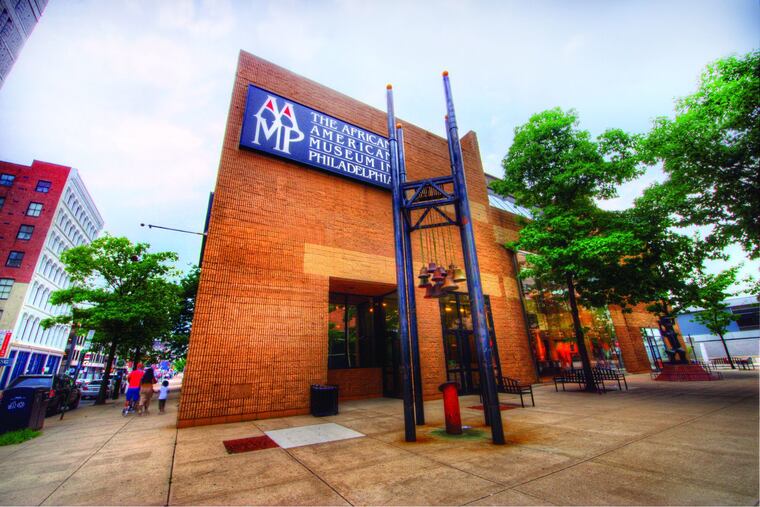As the nation reckons with racism, Philly’s African American Museum is wildly underfunded | Opinion
Founded in 1976 for the city’s bicentennial celebration (after significant advocacy for the representation of African Americans), AAMP helped shape a more comprehensive version of American History.

The murder of George Floyd brought into focus the pervasive, and often lethal, impacts that racism continues to inflict on communities of color, leading thousands to protest in Philadelphia and across the country. In the wake of this unforeseen reckoning, the mission of the African American Museum in Philadelphia (AAMP) — to connect diverse communities around art, culture, and historical narratives of the Black experience — became all the more urgent. AAMP is critical as Philadelphians grapple with understanding our city and nation.
Founded in 1976 for the city’s bicentennial celebration (after significant advocacy for the representation of African Americans), AAMP helped shape a more comprehensive version of American history. It is the only Philadelphia institution uniquely positioned to tell stories from the perspective of African Americans. Funded by the city, AAMP was the first Black history museum in the United States to be fully funded by a major city. Funding has dwindled to 8% to 14% of its overall budget but is critical for salaries and other operating costs, since grants are traditionally restricted to programming expenses. By comparison, the city’s appropriation for the Philadelphia Museum of Art is approximately 10% of its operating revenue.
When COVID-19 forced institutions to close in March, AAMP was among the 100+ arts and cultural institutions affected. However, recognizing this historic moment as an opportunity to engage and educate the public, the museum stepped up, “committed to serving as a responsive, relevant resource, reflecting the issues that matter to you and our community.” Since mid-March, AAMP has produced inimitable virtual programming covering the Black Lives Matter movement, the impact of COVID-19, and other issues disproportionately affecting the Black community.
Yet while AAMP has provided this invaluable resource, the city’s revised budget proposed eliminating its $231,000 of support for the museum (while proposing to reduce its appropriation to the Philadelphia Museum of Art to $2 million, about a $500,000 decrease).
Considering the mayor’s proposal to completely eliminate city funding of AAMP in his revised budget, his reported recommendation to include AAMP in the new waterfront proposal was a pleasant surprise. The museum was not part of the original RFP, and it seems that the 76ers' involvement most likely prompted its inclusion. Then both Hoffman & Associates and the 76ers included a new home for AAMP in their proposals, with the 76ers in direct conversation with the museum.
On Wednesday, the Delaware River Waterfront Corp. selected the Durst Organization to redevelop Penn’s Landing, in effect ending the 76ers' bid. Still, the idea of relocating AAMP is important to keep alive. Moving to Penn’s Landing, in a high-density, high-traffic destination, would be a significant win for AAMP and an asset to the implementation of a project like the Central Delaware Master Plan. The museum’s current location beside police headquarters and across the street from the federal prison has limited its impact in telling stories that were and are fundamental to the growth of both the city and the nation. Its isolation from the rest of the historic district reflects how it is undervalued, and could be seen as a metaphor for the underwhelming reception of its unique historic perspective.
» READ MORE: African American Museum funds slashed in revised city budget
Still, a new museum should neither distract from nor make up for the years of underinvestment in the city-founded institution. Relocation should be only part of the city’s effort to support an institution that it created, and whose mission and impact are more relevant than ever.
At a time when its contribution is essential, there should be greater discussion of how Philadelphia can bolster AAMP. The museum is telling the stories of systemic racism and inequity while its lack of funding reflects the latter.
Councilmember Helen Gym challenges the use of tax dollars in the 76ers proposal as Philadelphians struggle with the lasting impact of the coronavirus pandemic on all parts of life. The pandemic has created more urgent issues that need the city’s financial support. Support of small businesses, Black-owned businesses, child care, neighborhood corridors, and workforce development all supersede taxpayer subsidies for billionaire developers. And so does a city-founded institution whose mission and perspective are increasingly relevant with every instance of police brutality and every day of protest.
The current state of the country has created a deep need for trusted community information, education, and connection that AAMP was founded to provide. Now more than ever, AAMP is an integral asset to Philadelphia that should receive greater support in the city’s solution to create a truly more equitable city.
Lindsay Tucker So was most recently the assistant director of the City of Philadelphia Office of Arts, Culture and the Creative Economy.